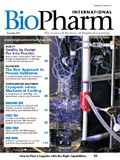Has the Era of Blockbuster Drugs Come to an End?
Eighty drugs will lose patent protection between 2007 and 2011.
Has the age of high revenue generating blockbuster drugs come to an end? This question is currently on the minds of pharmaceutical stock analysts and the managers of major drug companies. This question is also important for physicians like myself because the answer tells us what kind of drugs we will have at our disposal in the future. Which type of drugs will be in greater demand—blockbuster drugs created for the mass public or tailored products produced for specific sets of the population?

Nafees Malik, MD
Blockbuster drugs are defined as medicines generating global sales of at least $1 billion annually. For the last decade, major pharmaceutical companies have relied heavily on the blockbuster model to generate sales. The global pharmaceutical market was valued at approximately $600 billion in 2005.1 Blockbuster drugs accounted for 60% of the $245 billion in sales of the 10 leading pharmaceutical companies.2 But the ability of blockbuster drugs to continue providing companies with huge revenues is now in question.
Most of the current top earning drugs face patent expiry within the next few years. In fact, 80 drugs—accounting for approximately 25% of US drug sales—will lose patent protection between 2007 and 2011.3 Sales from blockbuster drugs often fall by up to 90% within a year of patent loss because of stiff competition from cheaper generic versions.
To sustain their revenues, companies will need to replace those blockbusters. Product pipelines, however, have weakened considerably; the number of new drugs to be approved by the US Food and Drug Administration has been declining over the last decade.4
The lack of medicines that could potentially attain blockbuster status has been partially blamed on drug companies neglecting research and development (R&D). According to Pharmaceutical Research and Manufacturers of America, however, $43 billion was spent on R&D in 2006.5 This marks a 65% increase from 2000 and makes the pharmaceutical sector one of the most research-focused sectors in the US.
Healthcare equity analysts feel that pharmaceutical companies have concentrated too heavily on producing me-too drugs—products which are fourth or fifth in a given therapeutic class. Me-too products are easier and cheaper to develop and a recent sector analysis by the management consultancy firm McKinsey showed that such drugs actually generate higher sales than first-in-class products.6
I believe that drugmakers must walk away from the me-too market and develop truly innovative medicines. Early signs at pharmaceutical companies, particularly their interest in new drug technologies, such as biologics and personalized medicines, suggest that this is a challenge they have accepted.
Nafees Malik, MD, is affiliated with Birmingham and Solihull Mental Health NHS Trust, Birmingham.
REFERENCES
1. IMS. New products and markets fuel growth in 2005.
2. Roth GY, Brooks K, Lowe DB. Top 20 pharma companies report. Contract Pharma. 2006;Jul/Aug.
3. Herper M. Nagging doubts for big pharma. Forbes. 2006; Jul.
4. US Food and Drug Administration. CDER approval times for priority and standard NMEs and new BLAs Calendar Years 1993–2005.
5. Pharmaceutical Research and Manufacturers of America. Pharmaceutical industry profile 2007.
6. Booth B, Zemmel R. Quest for the best. Nature Reviews Drug Discovery. 2003;2:838–841

VERAXA and Voyager to Create Combined Business for Advancing Pipeline of Next-Gen Cancer Therapies
April 23rd 2025The proposed business combination would create a publicly traded, clinical-stage biopharmaceutical company that will focus on developing a pipeline of next-generation cancer therapies.
Tokyo University of Science Research Team Explores Improved Delivery of Antisense Oligonucleotides
April 18th 2025Using cholesterol-modified oligonucleotides, the research team aims to improve the delivery of antisense nucleotide-based therapies for treating neurodegenerative diseases and brain cancers.